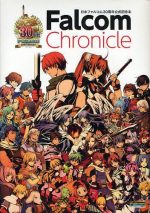
For many die hard JRPG fans, they can immediately say that Square Enix is the cream of the crop in both quantity and quality. Prior to their merger, Square and Enix were separate companies that went toe-to-toe. In Japan, there was a third option that got a considerable following, but only a cult following in the West, and that would be Nihon Falcom, and their RPG flagship series, Ys. Little did you know, it happens to be that Square and Enix took inspiration from Nihon Falcom. So, who are they and what else did they make besides Ys? Read today’s Editorial Tuesday to find out!
Falcon/Falcom
Nihon Falcom was founded in March 1981 by Masayuki Kato. “Nihon” is simply the Japanese way of saying “Japan.” As for the Falcom name, it has a unique story of its own. As a Star Wars fan, Kato took the name “Falcom” from Han Solo’s flagship, the Millennium Falcon. As to why the “n” is replace with an “m,” there are a couple and simple reasons behind that. For starters, the ン katakana character from the ファルコン (the Japanese way to write Falcom based on their Katakana syllabary) name can be interpreted as a “n” or “m.” Another reason to this is that “com,” the last three characters, is a Japanese way of shortening the word computer. However, it didn’t start as a game development company but as a computer advising agency, and Kato opened an Apple Computer shop in Tachikawa in Western Tokyo, where the company is still presently located. In June of 1982, they created and released original software. Their debut title was Galactic Wars 1 for the PC-88, which had an influence on Yoshio Kiya to join the company in 1984, who would become the mastermind behind their first big RPG series, Dragon Slayer. Through the rest of the year, Falcom released various types of software from games, to word processors, and hentai games. In December 1983, they released one of their debut RPGs, Panorama Island. Upon its release, RPGs were still a not thing in Japan and it was considered one of Japan’s first hit RPGs, paving way for Falcom to become a powerhouse in that genre. In March of 1984, they released Demon’s Ring, an adventure game for the PC. What makes Demon’s Ring special is how it handled loading images when players move around an environment. Just about 35 years ago, playing adventure games, even on a PC, was for a lack of a better word, really weird. Today, you can just rotate in an environment and it just feels natural. But in the old days, if you were to rotate, it would load to take in the data to create a separate image due to the limited technology at the time. As for Demon’s Ring, it was the first game where if you were to rotate, it would rotate without pausing to load a new image, which made gameplay smoother.
Dragon Slayer

In October of 1984, Falcom debuted its first ever RPG franchise, Dragon Slayer. Though it is not as internationally famous as Dragon Quest and Final Fantasy, both Square and Enix took inspiration from Dragon Slayer to make their respective franchises. So if anything, Dragon Slayer can be considered the true originator to the modern Japanese RPG. In addition, its action oriented gameplay and dungeon explorations also helped influence Zelda, Phantasy Star, and some of Falcom’s other flagship series, Ys (which we’ll get to). Like the creators of Dragon Quest, Kiya was influenced by Wizardry and Ultima, and wanted to do something different with the genre. Then when it was Dragon Quest’s turn, they took influence from Wizardry, Ultima, and Dragon Slayer. It became a hit in Japan, and would have numerous sequels and spinoffs, Xanadu and The Legend of Heroes, and those spin-offs would have multiple installments as well.
Pioneers in Video Game Music
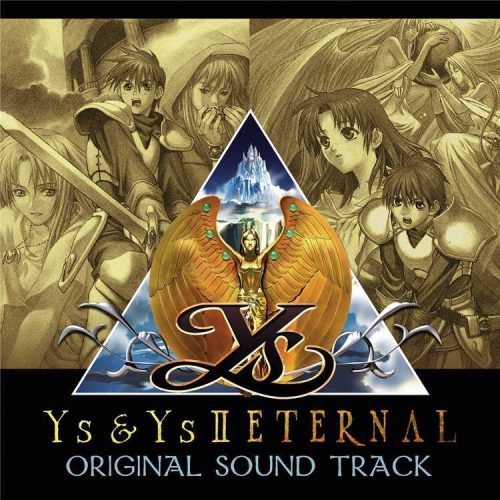
Though the large, legendary, and more mainstream software library of Nintendo Entertainment System popularized video game music, it was Falcom that were the original pioneers in that department. Some of you readers that are game music enthusiasts most likely know Yuzo Koshiro, who solidified his name in the 16-bit era, most notably with Streets of Rage/Bare Knuckle for the Genesis/Mega Drive. As a matter of fact, his debut in video games was working on the second installment to Dragon Slayer, Xanadu. He would also continue to work for Falcom for the rest of the 80s and make music for not only the Xanadu series, but for the first two Ys games as well. Though many games since the 32-bit era use actual orchestras and/or instruments, the technology of the time allowed composers to be creative and “electronic” to suit what was available. Despite the formal education and training of Koshiro and Mieko Ishikawa, they were self-taught in electronic music that relied on chiptunes. Beyond giving Koshiro his first projects, Falcom was one of the first gaming companies to have a team solely dedicated to making music for their games, or the Falcom Sound Team JDK. Mieko Ishikawa, who is also known for contributing to the soundtracks of Xanadu and Ys, served as the teams first ever leader. She is still presently at Falcom as the head of Design Unit. Another notable member who worked for Falcom Sound Team JDK is Deadball P (real name Ryo Takeshita), a pioneer of the vocaloid genre - which gave birth to its biggest icon – Hatsune Miku.
Ys
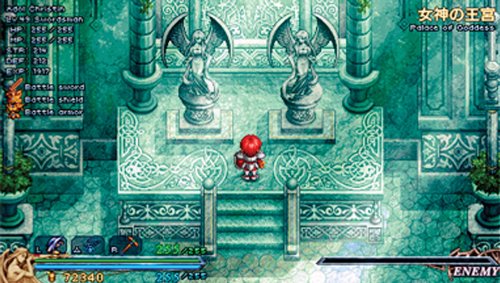
Both Ishikawa and Koshiro would collaborate to compose for Nihon Falcom’s biggest hit, 1987’s Ys, and its composition and presentation were then considered a milestone in gaming. Like the Dragon Slayer series and many of Falcom’s hit titles, Ys made its debut on the PC-88, one of Japan’s original PC hardwares, but it would make its American breakout on the Sega Master System the following year. In addition to the PC-88 and Master System (and later have an upgrade for the TurboGrafx-16 CD/PC-Engine CD), Ys had a Japanese exclusive release for the Famicom as well. If you played a different version of the game depending on the console, you’d get some different tracks as well. Who were the masterminds to the first three Ys games? That would be Masaya Hashimoto and Tomoyoshi Miyazaki. Miyazaki was the scenario writer and Hashimoto was the director. After the release of the third game, they left Nihon Falcom and started Quintet, which is most famous for ActRaiser, where Koshiro once again served as a composer. As of the early 2000s, Quintet is now gone for reasons unknown. As of 2009, Miyazaki declared bankruptcy due credit card debt and hasn’t been heard from since. As for Hashimoto, there’s really no information we could find to his present whereabouts. Due to the depth of the storytelling, then groundbreaking graphics, and distinctive gameplay with the battle system depending on where you position the character to attack an enemy, it was excellently received. Though the Dragon Slayer series already had recharging health, Ys’ inclusion exposed it to an international audience and to this day, recharging health is not only a staple to the Ys series but now a norm to gaming as a whole. Since its release, much of these qualities, especially with the battle system and how Adol, the main character of Ys, starts off his adventure (he always waking up after something happening) still remain as long-time associated qualities with the franchise, though some installments have forgone the iconic “bump attacks.” Just like every other multiple-installment series, each sequel would introduce something new. The second game introduced fireballs and the ability to turn into a monster. The third game made it an adventure side-scroller akin to The Adventure of Link. The fourth game took it back to its original roots, and the fifth game introduced new defense mechanisms, etc. While Ys isn’t as well known as other RPGs, it achieved so much. One of its re-releases was one of the first CD games to have upgraded graphics, provide cutscenes, and voice acting. The English release is also reported to be one of the first English dubbed games for localization. Beyond its numerous sequels and installments, Ys has become a multi-media phenomenon in its native Japan. In addition to its successful and influential soundtracks, the first two games inspired an anime OVA series in the 1990s, and it faithfully follows the foundation to them. Since then, Falcom has attempted to make other anime based on Ys. In one of the DVDs, they had a pitch trailer for an anime based on Ys IV to get studios interested in producing it, and unfortunately, it didn’t pan out.
Brandish
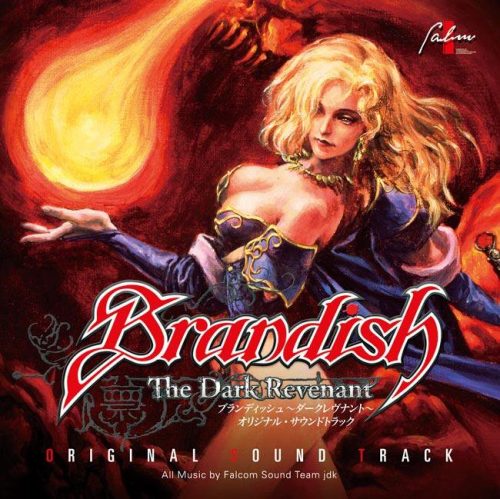
Another cult RPG series that was the brainchild of Falcom’s founder, Kato, is the Brandish series. Like Ys and Dragon Slayer, it initially debuted on an NEC PC in 1991, and later ported to the Super Nintendo and the TurboGrafx-16 CD. It did get a North American release but it heavily censored Dela’s consume, which was really skimpy in its original Japanese release. The American media didn’t recommend it for non-RPG fans, but a lot of RPG enthusiasts thought it was better than average. Over a decade later, it got a remake for the PSP and was considered a huge improvement of its predecessor. Like many Japanese RPGs that found success, Brandish got Japan exclusive sequels and the international RPG community wouldn’t get any until the PSP remake came out. It’s big in Japan to the point that one of Dela’s costumes happens to be an alternate costume for Rachel in Dead or Alive 5. However, some fans have made translations to its three sequels.
Final Thoughts
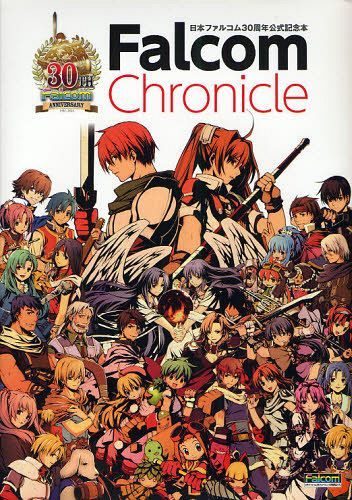
To this very day, Ys continues to prosper with a ninth installment coming for the PS4 in 2019. Their Legend of Heroes series is a Multiplatform hit, and a hit on mobile platforms in Japan (and also has an anime series). Falcom has always released their big hits on just about every platform that succeeds, so they were smart to also get into the mobile market, where its presently big in Japan. Beyond the remake to the first game in 2009, Brandish hasn’t had a true sequel since 1996 though Dela is featured in 2010’s Ys Vs Sora no Kiseki: Alternative Saga. To this day, Kato is still with the company as an 11.18% shareholder with Nihon Falcom Holdings having nearly 40.5%. While Kato remains with the company, many of its former employees have gone on to do great things and are still a mainstay in the industry to this day, most notably, Yuzo Koshiro. Yoshio Kiya presently works as as Chief Technical Officer to an online gaming company and previously worked as an advisor with Falcom’s MMORPG, Sorcerian Online, from 2007-2011. And as we stated earlier, some have just dropped off the face of the Earth such as Miyazaki and Hashimoto, the two creators to one of the best cult hit RPGs of all time. Though they are gone, they will never be forgotten. As for Nihon Falcom as a whole, it is time that fans and media further widely celebrate their contributions to the industry. Though what they paved way for may have been a matter of time, in the wise words of Ray J, it doesn’t deny that they were the ones who hit it first.
Add Comments